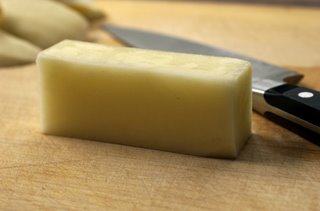
I love you, Dutch Oven.
I shall name you Sadie.
I had been saving the name Sadie for my firstborn daughter, but now I realize that I love you more than I will ever love any of my children.
I love you, Sadie.
You are red.
So far you have not destroyed any of my meals,
but only showered them with glorious, porcelain-enameled, cast-iron kisses.
I shall never eat anything again that is not braised in your glory.
oh no what have I done now the cats are jealous


Don’t worry, I did not cook the kitties. I have a feeling the orange one is poisonous. I don’t know why, I just have a feeling about it.
I made Pozole Rojo instead. Pozole is a hearty stew that dates back to pre-Columbian times, and it tastes better than my orange cat. It tastes better than lots of things, for that matter. It tastes better than almost everything.
This recipe uses pork shoulder, slowly braised in its own juices and other ingredients’ juices. Other essential components to a pozole are hominy (dried corn kernels treated with lime to remove the rough outer shell and make the germ more palatable), ancho chile puree, and various crunchy and refreshing garnishes such as radishes, avocados, and cilantro. The red tomatoes and the ancho chiles give pozole rojo its red color, while tomatillos and jalapeño chiles lend their green-ness to pozole verde.
Pozole Rojo
~adapted from America’s Test Kitchen
Stew:
5 lbs. bone-in pork shoulder (ATK recommends bone-in for more flavor…I used boneless because that’s all I had and it was still delicious)
salt and pepper
2 tbs vegetable oil
2 medium-large onions, coarsely chopped (about 3 cups)
5 medium garlic cloves, minced or pressed through a garlic press
1 14.5-oz. can of diced tomatoes
1 tsp. dried Mexican oregano
6 cups chicken broth
1 bunch of cilantro stems, tied or rubber banded together
3 large, dried, ancho chiles
1 ½ cups boiling water
3 15-oz. cans of hominy
Garnishes:
2 limes, cut into quarters
½ head romaine lettuce, sliced into thin strips
6 medium radishes, sliced thin (a simple vegetable peeler works very well for thin slices)
1 small onion, minced
1 bunch of cilantro leaves, roughly chopped
¼ cup of ancho chili puree (prepared with the stew)
tortillas, soft or hard
Preheat oven to 300 degrees.
Trim fat off the pork shoulder and cut into several large pieces. Rub a generous amount of salt and pepper into the pieces.
Heat oil in your wonderful and magnificent Dutch oven. Cook onions for about 4 minutes, until softened. Add garlic and cook for 30 seconds. Don’t let the garlic burn!
Add the meat and bones and cook for about 8 minutes, stirring often, until the outside of the meat is no longer pink.
Add the tomatoes, oregano, broth, cilantro stems, and ½ teaspoon salt. Increase heat to medium-high and bring to a simmer. This will allow fat scum to come to the surface, which you can skim off with a wooden spoon.
When you have removed enough scum, cover the Dutch oven and put it in the oven. Cook the meat for 2 hours, until it is tender and falling apart.
Meanwhile, remove the stems and seeds from the ancho chiles. Soak them in the boiling water for 20 minutes. Puree the chiles and the soaking water in blender, then pour the purree through a fine mesh sieve.
When meat is done, remove the meat and bones from the pot. Throw away the bones.
Add the hominy and ¾ cup of ancho puree to the stew. Cover the stew again and simmer it on top of the stove over medium-low heat for about 30 minutes, so that the hominy can soak up the flavors of the stew.
Remove the bunch of cilantro stems from the stew and discard. They have served their purpose and I am grateful to the cilantro stems.
When meat has cooled, shred it with your hands or the tines of two forks. Stir the shredded meat back into the stew.
There might be more fat scum on the stew, which you can skim off again, if you like, or not. Fat scum be gone!
Ladle the stew into bowls and top them with the garnishes.











